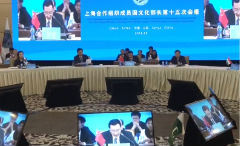Joint plan to encourage tourism
2018-06-09
China Daily
Member countries of the Shanghai Cooperation Organization are expected to sign a joint action plan for 2019-2020 during the two-day summit in Qingdao to further boost tourism, a senior Chinese official said on June 8.
The new plan aims to offer more abundant tourism products, improve services, better secure the legal rights and safety of tourists and introduce new technology, such as big data analysis, said Xue Yaping, director of the tourism promotion and international cooperation department of the Ministry of Culture and Tourism.
“SCO member countries are close neighbors,” he said. “Their tourism features complement each other and thus create huge potential for the market.”
Great achievements have been made in tourism in recent years. In 2017, China attracted 3.61 million international visits from citizens of other SCO member countries, up by 11.75 percent year-on-year. That included 1.67 million from Russia and about 800,000 from India, ministry data show.
On the other hand, Russia received 2.3 million visits from China last year, and India and Kazakhstan each received about 200,000, according to the ministry.
With the development of the Belt and Road Initiative, Chinese tourists have shown an increasing interest in Central Asia, which is along the primary route of the ancient Silk Road, Xue said.
However, the relatively complicated visa application procedures of Central Asian countries are sometimes a bottleneck, he said.
“More measures will be taken in the coming years to simplify visa application and customs procedures under the joint action plan,” Xue said. “And we’ll develop more tourism products to ‘connect the dots’, enabling Chinese visitors to travel to multiple Central Asian countries within one trip.”
In addition, more “package products” that include the Chinese mainland, Hong Kong, Macao and Taiwan will be promoted in other SCO countries.
Since the China Railway Express to Europe has become a freight artery connecting many Chinese and European cities in terms of logistics, the rail network, which crosses Central Asia, can also be used for tourism to offer visitors abundant experiences.
“Such a cooperative platform (under the SCO) is mutually beneficial,” he said. “We can understand each other’s actual needs through more dialogue.”
In May, top tourism administrators of SCO member countries met in Wuhan, Hubei province, where a draft was made for such a joint action plan.
Though Xue said there will be no specific target for the number of mutual visits within the next two years, he emphasized that comprehensive cooperation in tourism will have long-term effects.


